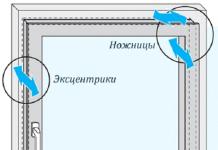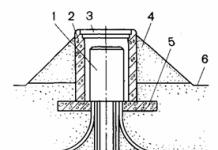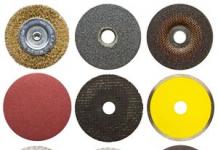Many amateur gardeners are aware of the wayward nature of the tropical beauty - the orchid. In a natural warm and humid environment, it grows and blooms profusely on trees and even rocks, that is, wherever it can find support for roots. In home conditions, which are very far from natural, it requires special care and increased attention from its owner. As a rule, specialized stores sell already flowering plants. Only in this form can you evaluate the quality of the flower and its variety.



Peculiarities
Orchids are often purchased as a gift. They can replace the most beautiful bouquet, maintaining a fresh look much longer. And how great the disappointment can be when a tender capricious woman withers, gets sick, stops flowering, or even dies. Correct development of an orchid is possible with careful compliance with several specific conditions: she loves warmth and high humidity. For abundant flowering, it needs to provide the necessary soil composition and fertilize regularly and correctly.
When purchasing an orchid, it is important to familiarize yourself with the conditions of its natural habitat. In the tropics there are many species of orchids, differing in the length and structure of the stem, the size and color of the flower, and the structure of the root system. But only some varieties are suitable for import.
The most common orchids belong to a large group of epiphytes.. They grow on other plants, using their woody system as support for their roots. Therefore, to ensure soil suitable for their life a substrate containing a certain amount of wood and moss components is required.
The second most common type is lithophyte orchids, for the same purposes they use rocks and stone ledges. Naturally, in the middle zone Breeding these types of orchids is possible only in a specialized greenhouse.


Moisture and nutrients are supplied not only by the roots, but also by the long, wide, fleshy leaves. They are able to provide the plant with them without additional watering for quite a long time.



This structure of the plant determines the feeding characteristics. There are root and foliar feeding.
- Root feeding supplies the required amount of macro- and microelements. This process in orchids is somewhat different from other plants. The roots of the flower must first be moistened generously. The pot with the orchid should be carefully immersed in a wide bowl with clean water, and the fertilizer should be diluted with warm filtered water. It's important to remember that the concentration of the solution must be carefully observed, otherwise the roots can be burned.
All medications are administered only in liquid form. The plant watered with fertilizer should be left in the tray for 20 minutes.


- Foliar feeding It is recommended to do it in cloudy weather or in the morning so that the leaves do not get exposed to sunlight. For foliar feeding, the fertilizer must be diluted in a double portion of liquid. Thoroughly irrigated only leaves on both sides and exposed roots. The solution should not come into contact with flowers and buds. This type of feeding is carried out during the period of active root growth and for weakened plants.
Flower growers need to remember that at home, the flower enters the dehydrated air of heated rooms. The soil substrate suitable for planting them is prepared on the basis of pine bark, and is therefore loose and poor in composition. That is why orchids, more than other plants, need regular and proper nutrition.
Mistakes made by the owner can cause the plant to either freeze in development or die.


Kinds
Natural features allow us to talk about the orchid as a plant that is capable of independently extracting the substances it needs from the environment. Therefore, the owner of what appears at first glance to be a very whimsical beauty simply needs to pay attention to the simple rules of care.
Preparations intended for fertilizing orchids can be divided into three types: folk remedies, complex fertilizers, special fertilizers. The use of each of these products is necessary for orchids; it is only important to remember that their composition is very dependent on the condition of the plant, the environment, and the time of year.

Folk remedies
Experienced gardeners often use improvised means to nourish orchids, many of which are easy to find at home. Such decoctions and infusions are prepared immediately before use, since they cannot be stored for a long time, and this type of plant should be fertilized no more than once a week.
- Very useful vitamin infusion, rich in minerals, in particular potassium, easily can be made from banana peels. To do this, the peel of one fruit needs to be crushed and left for two days. Then strain and dilute with warm water in a ratio of 1/2. It is useful to wipe the leaves with the back of a fresh skin.
Minerals are present in quantities sufficient for orchids in black tea. But it is not recommended to use this remedy often, since tea oxidizes the soil.


- Decoctions of potatoes and onion peels will also enrich the soil with potassium and phosphorus. To do this, the peel of one medium onion (it’s a good idea to add citrus skins) needs to be boiled for ten minutes, let it sit, and dilute the broth until light. You can also pour boiling water over potato peelings and cool. You can use the liquid drained after boiling potatoes. A teaspoon of sugar will help further enrich the composition.
- Several times per season (but no more than three) flowers can be fed with yeast. They greatly promote plant growth. For orchids, yeast tincture is used in lower concentrations than for all others. One gram is enough per liter of water. For better fermentation, you can add a little sugar. They should be left to steep for about a day.


- Closer to mineral fertilizers than to organic ones, wood ash infusion. This substance contains quite a lot of potassium, phosphorus, and calcium. Well-sifted ash should be poured with boiling water (no more than three tablespoons per liter), wrapped warmly and left for about two days. The resulting solution must be diluted in a ratio of 1/10.
The safest option for orchids is the following: pour the ash solution into a wide but not very deep bowl, then immerse the pot with the plant in it for about 5 minutes, then pour clean water over the roots.
- Not only nutritious, but also Garlic water has a disinfecting effect on orchids. To prepare it, you need to pour one liter of boiling water over one head, leave for half an hour, and thoroughly dilute with water (three tablespoons of infusion per liter). Regular treatment with garlic promotes abundant flowering of orchids. Succinic acid will enhance the effect of the procedure.



- Many amateur gardeners use it to care for house plants. hydrogen peroxide. This product has an antiseptic effect and protects against pathogenic microbes and harmful insects. In the case of orchids peroxide can be used only in extreme cases and only to strengthen the immune system. This drug does not work as a top dressing. The concentration of the solution should be 3%.
It is important to pay attention to the information indicated on the packaging. If the solution is 98%, then two tablespoons are diluted in a liter of water. A less concentrated solution is absolutely useless.
It is important to remember that you cannot water orchids with this product; soaking the seeds for disinfection is permissible only for 10 minutes, no more.

Using a sprayer, all parts of the plant are sprayed, cleaned of dust and foreign deposits. The moisture should only create a kind of fog around the plant, neither falling on the flowers, nor flowing to the roots, nor accumulating on the leaves. Excess liquid must be removed.
It should be noted that it can be very difficult for beginners to calculate the required concentration and select the right product for each period of the life of orchids. In order not to harm the plant or burn the roots, inexperienced gardeners should still begin care by using specialized products.

Complex fertilizers
Experts advise periodically feeding all house plants; many modern series of fertilizers have been developed for this purpose. Orchids need additional nutrition more than all other flowers. With a careful and careful approach, you can choose something from the general series for them.
The easiest way is to use complex fertilizers, the composition of which is balanced and designed specifically for these flowers. These vitamin cocktails contain the following essential components:
- nitrogen, thanks to which the root system, stems and leaves fully develop, but its excess slows down the appearance and development of buds;
- potassium, which accelerates plant growth and helps strengthen its endurance;
- phosphorus, which is responsible for the formation of a lush flower “cap”;
- vitamins (group B, ascorbic acid) and amino acids for better absorption of nutrients and increased immunity;
- special components that prevent the deposition of salts and minerals;
- Especially worth noting is vitamin B3 (nicotinic acid), which is necessary for damaged and diseased plants.



In addition, the acidity (pH) of the fertilizer must be no lower than 5 and no higher than 7. The concentration of all components is significantly lower than in fertilizers for other plants.
But the plant does not always need all the substances included in the complex fertilizer. You can fertilize orchids more flexibly and quickly special means.

Specialized fertilizers
By and large, all fertilizers in this group can be classified as complex, but still each of them has a narrower effect.
- "Bona Forte"- an almost ideal domestic product, which is most often recommended by experienced florists. It dissolves well in water and is almost impossible to harm delicate orchids. The unique composition, which includes, in addition to the basic components, thiamine, niacin, vitamin C, ensures the beautiful appearance and health of the flower.
Thanks to the presence of magnesium, photosynthesis is activated, and succinic acid accelerates plant growth and protects them from many unfavorable factors: drafts, insufficient lighting, low humidity, improper watering. But in order for the buds to develop more intensively, additional phosphorus may be required.


- Significantly improves the appearance of plants "Agricola". This easy-to-use domestic fertilizer is available in different forms: powder, gel, sticks, solution, tablets. The composition is especially suitable for feeding plants that have found themselves in a new habitat, sick, weakened flowers.
Very actively protects against fungal diseases. Flowering of plants treated with Agricola is longer and more intense. Flower petals become brighter and more saturated. But for active growth, additional fertilizing with nitrogen may be required.
- Significantly activates the development of the orchid root system "Ribav-extra", created on the basis of a special type of mycorrhizal fungi. Research has shown that mycorrhiza, a mutually beneficial symbiosis of these fungi and plant roots, enriches the latter with both essential substances and moisture, improving their nutrition by more than 15 times.
To create this fertilizer was used ginseng root, which increases the effectiveness of the drug. In addition to growth, general health, protection from stressful situations and damage, this fertilizer has a rejuvenating effect and significantly improves the appearance of the plant, increasing the number of flowers and greenery.


- Fertilizer is deservedly called “flower happiness” "Fasco". It is especially useful for stimulating the process of budding; flowering after it becomes longer and more generous. The same series also includes soil that is ideal for orchids.
- Under the brand "Bio Effect" A series of preparations is produced for all types of orchid feeding. It contains cytokinin paste - the most powerful plant growth stimulator, used to awaken the buds and form flower stalks. The soil in this series has a balanced composition, designed specifically for orchids.
Biologically active vitamin cocktails and sprays help plants cope with stressful situations more easily, promote adaptation to new conditions, and stimulate flowering.


- "Pokon" Available in two forms: liquid and in sticks, which are inserted and deepened into the ground. It is rightfully considered one of the best remedies, easy to use and can be used all year round. It is produced in Holland, so its price is quite high. But it is used very economically.
- The drug differs from other fertilizers "Osmocote". It is produced in granules, which begin to decompose in the soil after watering, gradually supplying useful substances to the roots. It works for quite a long time - more than six months.


How to choose?
Every orchid owner thinks about how to choose the most suitable fertilizer for a tropical beauty so that it blooms for a long time, profusely and beautifully, gives birth to children, is healthy and strong.
When choosing a ready-made mineral fertilizer, you need to pay attention to the richest composition, time of year, plant needs. To regulate metabolic processes it is necessary iron, copper, zinc, potassium, calcium, manganese. Responsible for the formation and growth of roots, stems, leaves phosphorus, nitrogen, oxygen, hydrogen, proteins, carbon, sulfur. The plant extracts oxygen, hydrogen and carbon from the air itself; it can only obtain other substances from feeding.
The ratio of nutrients differs from their amounts in conventional complex fertilizers, so if you have a choice, you should pay attention to specialized mixtures.


Potassium, nitrogen and phosphorus- the main components, their ratio is indicated in numbers on the packaging and for orchids is 3: 1: 2, where 3 parts of nitrogen account for 1 part of phosphorus and 2 parts of potassium. If possible, avoid using fertilizers in stick or tablet form. The characteristics of the soil do not allow such forms to completely dissolve and enrich it.
For the birth of children and the awakening of dormant kidneys, there is an effective and safe drug - cytokinin paste. This remedy causes massive cell division; for active reproduction of orchids, it is enough to lubricate the area on the peduncle.


When and how to feed?
To ensure the vital activity of orchids, it is important not only to choose the right drug, but also to carefully follow the not very complicated processing rules.
- The first two weeks at a new place of residence the flower goes through an adaptation period. At this time, it is better not to disturb it at all; you can feed it at home with a weak solution of honey or sugar, carefully spraying the plant.
- Before fertilizing it is necessary to assess the condition of the substrate. The older it is, the more microorganisms and fungi live in it, which participate in the formation of the microclimate. With frequent feeding, minerals will accumulate in such an environment, which can lead to the death of roots. New soil, especially one that has been heat-treated or containing synthetic materials, should be fertilized more often.
- Do not fertilize sick, damaged or weak plants. First, it is necessary to carry out therapeutic procedures: carefully clean and dry the rotten roots, water and apply weak fertilizing at this time only to the leaves in small doses.
- Active flowering period– not the best time to apply fertilizers. If this is still necessary, the liquid should not get on the flowers and buds.
- Before fertilizing The roots must be thoroughly moistened with clean water to avoid burns; it is better to do this by immersing them in clean warm water.
- Any type of fertilizer must be diluted in full accordance with the instructions.. For this purpose, it is better to pre-purify the water: filter or settle. If there is no special fertilizer, other types of preparations should be diluted with double the amount of liquid compared to the recommended amount.
- After fertilizing you need to make sure that the liquid does not remain in the pan, otherwise the roots may rot.
- After transplantation, the orchid does not need to be fed for the first 3-4 months. while there are still useful substances in the soil.
- Children after transplantation should take root and begin to grow, only then can they be fed by the root method. Before this, the sheet method should be used. To fertilize young plants, the recommended concentration should be reduced by 2 or even 3 times.
- The amount of feeding depends on the time of year: in summer and winter (in winter you don’t have to feed at all) they are applied once a month, in spring and autumn - twice.



Orchids bloom in the tropics all year round. At home, with proper care, they delight the owner Twice a year. First of all, you should pay attention to the life cycle of the plant: periods of flowering, growth and dormancy.
Feed the plant only during active growth. The appearance of new leaves, roots, and flower buds begins, as a rule, in the second half of March and continues in April. A developing plant requires additional nutrition.


The orchid is considered to be the queen of every flowerbed. A gentle and fragile creature gathers large crowds of fans at her feet, and this is not surprising. With proper care, the flower will thank its owner with a healthy appearance and lush flowering in a wide variety of shades.
When growing indoors, various methods of feeding the plant are practiced. With their help, the culture fully reveals its potential, supporting it during the flowering period.
In contact with
Classmates
Among the popular means:
- mineral fats;
- humic preparations with a rich content of macro- and microelements;
- fertilizing with extract of biologically active substances;
- and much more;
The role of the soil substrate for orchids is a supporting function, since the level of nutrient content is minimal. Naturally, there are a small amount of individual components, but over time they are washed out with water. To compensate for the deficiency, complex fertilizers consisting of minerals, vitamins and enzymes should be used.
Feeding orchids at home
The key component of living organisms is nitrogen, phosphorus and potassium. The absence of these elements can cause the death of a beautiful queen. Let's look at each member of this “trinity” in more detail.

In addition to the above elements, The orchid needs to be fed with the following substances:
- zinc;
- silicon;
- chlorine;
- manganese;
- and many other minerals.
In this case, it will grow and bloom much more efficiently.
What does a plant eat in natural conditions?
To decide how to properly fertilize an orchid, pay attention to key subtleties its life activity in real conditions:

How to properly fertilize an orchid
Having learned the key features of flower nutrition in its natural environment, try to recreate such conditions during room care. You must understand that feeding orchids during flowering is a very painstaking process. To avoid irreparable difficulties, it must be treated with special care:

Procedure algorithm
To successfully feed a growing indoor beauty, follow the instructions:
- Provide the plant with plenty of fertilizer 1-2 days before feeding. With increased substrate humidity, the absorption of minerals will occur much faster, and the root system will receive reliable protection from the aggressive effects of pesticides;
- Start preparing the mixture. At this stage, it is important to follow special instructions, diluting the powder with water at room temperature. If you use mineral fertilizers or non-targeted fertilizers, the fertilizing concentration should be reduced by at least half;
- After this, the pot with the flower must be immersed in a container with the solution so that the main part of the rhizome has access to it. Leave the container in this position for 15-20 minutes;
- Then you should wait until the excess liquid flows out through the drainage holes.
When spraying, protect the plant from direct sunlight and drafts. Also make sure that large drops do not accumulate between the leaf axils.
The best fertilizer for orchids
Before choosing a good food for your indoor queen, take a responsible approach to choosing suitable solutions.
The best option- use of complex fertilizers on a soluble basis. They include all the components that are necessary for the flower before and after flowering. Microelements are supplied in chelated form, that is, they are already suitable for effective absorption, so they will not settle as dead weight in the form of salts. Vitamins of groups B, PP, amino acids and growth regulators will be useful supplements.
Gardeners also speak positively about liquid fertilizers and fertilizer mixtures from Bona Forte, Fertika Kristalon, Mister Tsvet, Etisso and others.
 Organic complexes rich in macro- and microelements also have a positive effect on crop development. They are created from extracts based on vermicompost extract. Natural humic substances act as excellent growth stimulants, which enhance budding, splendor and brightness of inflorescences.
Organic complexes rich in macro- and microelements also have a positive effect on crop development. They are created from extracts based on vermicompost extract. Natural humic substances act as excellent growth stimulants, which enhance budding, splendor and brightness of inflorescences.
Natural preparations are very popular Agricola, Stimovit, Reasil.
As for foliar feeding, they are most often carried out to resuscitate damaged parts. As an ambulance for such plants, leaf fertilizers are used, which contain all the necessary phytohormones, amino acids and other useful elements. Due to such substances and fine spraying, the crop is enriched with all nutrients and becomes resistant to all kinds of diseases. The drug of the Doctor Foley direction is very popular. With its help, you can fertilize not only weakened specimens, but also support the plant during the flowering stage.
How to properly feed a plant?
As mentioned above, orchid belongs to epophytic plants. Because of this feature, caring for the queen is significantly different from caring for other green spaces. Currently, several types of flower feeding are used:
- Fertilizing using the immersion method (together with watering). This option is great for healthy flowers that have a well-developed branched root system. The first step is to create an aqueous solution of a special fertilizer, into which the orchid will be immersed at the next stage;
- As for foliar fertilizers (another name is foliar feeding), they are most often used for weakened plants with an absent root system, as well as with a noticeable lack of certain elements, such as potassium, phosphorus, calcium and others. Foliar technology involves the use of specialized compounds, which are available in containers with spray bottles, or conventional fertilizers for indoor crops.
Before the procedure, the flower is watered or soaked in a basin. It is important that the water remains soft and at room temperature. This way the roots will absorb the mineral composition as much as possible. It is important that the orchid stays no longer than 20 minutes in the prepared solution. After successful completion of the procedure, the plant should be placed in a permanent place, making sure that the composition does not remain at the bottom of the flowerpot. Otherwise, this will cause rotting of the root system.
 In winter the intensity of fertilizing is reduced to a minimum. In this case, it is better to use ready-made complexes, which are applied once every four weeks.
In winter the intensity of fertilizing is reduced to a minimum. In this case, it is better to use ready-made complexes, which are applied once every four weeks.
In order for the growth and development of an orchid to be as successful as possible, it is important to provide the plant with access to the following elements: phosphorus, nitrogen and calcium.
At the stage of laying peduncles and forming buds It is better to use organic mixtures rich in phosphorus and calcium.
- phosphorus;
- calcium;
- nitrogen;
- potassium and other elements.
During the growth of leaf mass, and this happens in the spring, it is necessary to fertilize well with nitrogen fertilizers. In summer, use fertilizers with a high potassium content. Orchids need a lot of phosphorus for:
- kidney formation;
- bud formation;
- release of peduncles.
Read also!
Eating methods and timing
There are two ways to feed orchids. You can apply liquid fertilizers at the roots or spray them on the leaves. Flower growers actively fertilize orchids with both. In the case of root feeding, it takes longer for nutrients to be absorbed. First, the composition penetrates the roots, and then, together with the juice, enters the plant itself.
Before feeding orchids at home, they are immersed in warm, settled water for half an hour. This will prevent damage to the roots. Then put it in the prepared liquid composition for 20 minutes.
Do not allow fertilizer or water to remain in the tray after the procedure. This will cause the roots to begin to rot.
The foliar method has an important advantage - rapid absorption of nutrients. It is recommended to resort to it if there is a deficiency of useful elements. When foliar feeding, the solution is made in a concentration less than the root one, 2 times.
It is recommended to fertilize orchids, but you need to know at what time this is allowed. Fertilizer is used in the spring for better plant growth and for it to gain strength for lush flowering. In summer, you can apply fertilizer only before the formation of the first bud. As soon as the orchid begins to bloom, foliar feeding can be used. In autumn, during flowering, the orchid is fed along the roots and leaf blades.
The frequency of fertilizing also depends on the time of year. During the period of rapid growth, which occurs in spring and autumn, fertilizers are added once every 2 weeks. In summer and winter, the procedure is carried out no more than once a month.
It is forbidden to use two types of orchid fertilizers at once.
Purchased funds

You need to purchase fertilizers for orchids that say on the packaging that they are intended for phalaenopsis. They contain minerals that prevent the accumulation of all kinds of salts in the soil. This mineral fertilizer for orchids helps maintain a certain acidity in the soil, as a result the flower absorbs the necessary minerals. The composition contains elements useful for it:
- amino acids;
- vitamins;
- succinic acid.
The components included in the mineral mixtures are in such a concentration that the roots will not get burned. You can feed an orchid with a universal complex fertilizer for flowering plants in exceptional cases, remembering to prepare a less concentrated one.
It is necessary to dilute the fertilizer to feed orchids during flowering with double the amount of water compared to what is indicated in the instructions.
For foliar feeding, special solutions are sold in the form of sprays. It is best to use liquid mineral fertilizer for abundant flowering. Thanks to this feeding, new buds will begin to form and many inflorescences will form. Manufacturers of liquid fertilizer indicate on the labels the numerical ratio of nitrogen, phosphorus and potassium.
Read also!
Commonly used fertilizers:
- In order for an orchid growing in your home to bloom profusely, you can use the Bona Forte composition, which also extends the flowering period to 6 months. This is an excellent food for orchids to bloom. The product must be dissolved in water, which is used in 2 times less than what is written in the instructions. After flowering stops, they begin to apply it exactly according to the instructions.
- You need to feed Greenworld before watering, diluting it by half. If drops accidentally fall on the flower, they should be removed with a soft, damp cloth.
- A good natural remedy “Flora” consists of an extract of biological humus. It is in a convenient bottle with a sprayer, which allows for even foliar feeding. The drug helps return the green color to the leaves, eliminating their yellowness.
- "Doctor Foley Orchid" can be sprayed on the plant every day. There are 2 options. One is used for young plants that are forming and growing leaf mass. Others need to fertilize those already in bloom.
- The product "Effect" is produced in plastic containers. Suitable for adding useful elements to the root. The spray is used on the leaves.
- Liquid universal fertilizer “Ideal” is used to feed orchids at the root. After it, it blooms long and profusely. The methods for using the composition are different: for foliar feeding, half a cap of “Ideal” is dissolved in 1 liter of water, for root feeding – 1 cap is diluted in 1 liter.
- One of the effective fertilizers for orchids is the Dutch product “Pokon”. It is available in liquid and stick form. The first is enough for 200 liters, and 1 stick is enough for 3 months. The liquid should be diluted with water in the required proportion, the sticks should be inserted and deepened into the soil.
Folk remedies

Some gardeners prefer improvised means to industrial fertilizers:
- banana peel. One skin is infused in a liter of water for 2 days, after which the infusion is diluted 1 to 1 and the plant is watered;
- Coffee and tea, which contain necessary minerals in low concentrations, help the flower grow and develop quite well;
- You can use chilled and strained water in which the potatoes were boiled. During the cooking process, it is saturated with potassium;
- A good natural fertilizer is a slightly saturated decoction of onion peels; it also contains potassium. This decoction prevents the flower from rotting and prevents the development of a number of diseases. To prepare it, you need to take 1 glass of husk and brew it in 3 liters of boiling water, wrap it up. The product should be infused for 8 hours. After this, strain the infusion and dilute it, taking 1 part - 3 water;
- Wood ash from all coniferous trees is considered one of the best natural fertilizers. It contains a large amount of minerals. In order for orchids to bloom profusely, you need to make the right solution: take 200 g of ash per 1 liter of water;
- Sugar is a supplier of glucose, which is necessary for the flower to grow. The product can be poured onto the root and then poured over either 1 tbsp. dilute in 0.5 liters of warm water. Instead of sugar, honey water is sometimes used, which contains many vitamins and microelements necessary for growth. It is prepared by dissolving 1/3 tsp in a glass of water.
For your information!
Traditional recipes are quite simple to make, the difficulty lies in the correct dosage calculation.
Organic matter is not often used for this flower; it means:
- wood ash;
- humus;
- compost;
- manure.
The point is that it is difficult to determine the exact concentration, although they contain nutrients for the plant. Such fertilizers are used to keep the flower in the pot. Basically, for these purposes they take a light plant substrate or tree bark. They do not allow water to accumulate and allow air to pass through well.
The best organic fertilizer for orchids is horse manure, which is diluted with water to a weak consistency. It brings great benefits during leaf growth. Orchids need such fertilizers to activate flowering. Manure should be rotted with a low concentration of nitrogen. Only healthy plants can be fed.
How to feed an orchid? The answer to this question is not known to every gardener. But the use of fertilizers is an opportunity to speed up the process of flower appearance, ensure survival after transplantation and improve the growth of the plant as a whole. And as a flower feed you can use sugar, yeast, sweet, honey, and garlic water. Store-bought drugs will also be a good choice, including “Tsitovit”, “Flower Paradise”, “Agricola”, etc.
Let's take a closer look at why you need to feed an orchid, how to do it correctly and how often, and what means to give preference to. As a result, the plant will bloom profusely, grow well and be resistant to diseases.
Remember that the nutrition of any plant, including orchids, must be balanced and rational. The best choice is a fertilizer specifically formulated for epiphytes.
In principle, every gardener can do it with his own hands. You need to know the chemical elements needed by the plant. These include:
- Phosphorus. It is responsible for the flowering of flowers, as well as the formation of peduncles. This substance is especially necessary for the orchid in the fall, when buds form.
- Potassium. It is needed for the orchid’s normal metabolism, photosynthesis, and strengthening the immune system. The plant really needs this substance in the summer, when the orchid is vulnerable to pests.
- Nitrogen. It ensures the growth of leaves and their normal development, which affects the life of the flower itself. The orchid will need this substance in the spring, when intensive leaf growth is observed.
- Trace elements (cobalt, silicon, boron, iron, magnesium, zinc, manganese, molybdenum, etc.). They will ensure the overall health and development of the flower.
Essentially, the gardener is required to combine these substances in the correct proportions (increasing the dose required depending on the situation). If you are worried that you will not be able to achieve the correct fertilizer, you can give preference to ready-made fertilizer. Below we will offer options for both home and store remedies.
When and how should you feed an orchid?
When and how should you feed an orchid at home? There are two main ways to apply liquid fertilizer: at the root or “over the leaf” by spraying. Both options are in demand, but each has its own characteristics that you need to know.
So, root feeding has the following features:
- Nutrients are absorbed by plants for quite a long time.
- The drug reaches the roots, and then is absorbed by them and gradually reaches the leaves with the juice.
- Fertilizing is advisable exclusively for the roots of the plant, as is clear from the name.
- Fertilizers must be liquid. They should treat the soil around the flower stem. Try not to allow drops of fertilizer to fall on the leaves and stems.
Foliar feeding also has its own characteristics:
- In this case, fertilizers are absorbed faster.
- Foliar feeding is an excellent way to saturate the plant with useful elements if it has become lethargic.
- Keep in mind that the concentration of the product for foliar fertilizer should be two times less than for feeding “under the root”.
- This feeding is especially useful for leaves.
Remember that you need to feed the flower only during the active growth phase and no more than once every two weeks. Before feeding, the root system of the plant must be soaked in warm, settled water. As a result, burns are avoided.
The best store-bought drugs and fertilizers
The best store-bought preparations and fertilizers for feeding orchids must be liquid. Let's look at the main products that will be useful for plants. A special feature of the preparations is the content of macro- and microelements necessary for flowers, including nitrogen, phosphorus and potassium, which ensure the growth and flowering of plants.

| Product name | Description of the drug |
| "Kemira Lux" | Most often, the product is sold in the form of powder or granules. For one liter of water you need 1/3 of a sachet. Before watering, you need to take half a glass of the solution and dilute it with a liter of water (preferably settled), and then carry out the feeding procedure. |
| Substral | An excellent product designed for root feeding. 1 milliliter of the drug per two liters of water is enough. |
| Etisso | The product is very strong and effective. Instructions for diluting with water are given on the packaging. Users claim that it is best to dilute the products twice as weakly as written in the instructions. |
| "Master" | The drug is complex and very effective. Its composition is impressive in its variety of micro- and macroelements, and it is also rich in growth stimulants and amino acids, which are perfectly absorbed by the plant. The product is designed for feeding “at the root” and is suitable for literally all plant varieties. |
| Greenworld | It is worth diluting the products twice as weakly as indicated in the instructions. The product is intended for feeding “at the root” before watering. At the same time, drops of fertilizer should not be allowed to fall on the leaves, so as not to harm them. |
| Compo | The fertilizer is universal and suitable for all varieties of orchids, promoting growth and long-term flowering. The product is manufactured in Germany and is usually available in 500 ml containers. |
| "Flower heaven" | The composition of the product is represented by mineral compounds that are necessary not only for orchids, but also for other flowering plants. The drug is fast-acting. The dosage assumes that 5 milliliters of product are needed for 500 milliliters of water. |
| "Fasco" | This is both fertilizer and soil, which ensure active growth of the plant. Users also note a more active appearance of flower stalks. |
| "Pokon" | A strong drug that is diluted taking into account the fact that five milliliters of the product is enough for one liter of water. Feeding is carried out “at the root”. |
| Bona Forte | A good product that contains nitrogen, phosphorus, potassium, iron, cobalt, copper, magnesium and other microelements that are required for abundant flowering and growth. The product can be found in stores in different forms. For orchids, you need to choose a liquid one, and dilute it twice as weakly as recommended according to the instructions. |
| "Joy" | The fertilizer is specially created for orchids. With regular use, you can accelerate the growth of the plant and achieve abundant flowering. "Joy" is perfectly absorbed by the roots of the plant. A huge advantage is the absence of chlorine in the composition, which is harmful to orchids. |
| "Agricola" | This is a complex fertilizer containing the necessary humic substances and mineral compounds. The product was created for feeding “at the root”. |
| "Biomaster" | This product contains both mineral and organic fertilizers. With regular use, you can increase the plant's immunity to diseases. As a result, orchids will take root better after transplantation, be resistant to environmental factors, and bloom for a long time. A useful remedy for plant children. |
| "Ideal" | This is a universal liquid fertilizer that is used for both the roots and leaves of the plant. With regular feeding, you can enjoy abundant and long flowering. The product must be poured using a bottle cap. One such measuring cup is diluted in one liter of water for feeding “at the root”. And to feed the plant “leaf by leaf”, you need to dilute half a cap in one liter of liquid. |
| "Effect" | The product can be used for both root and foliar feeding. The drug is sold in liquid form in plastic bottles of 300 milliliters. The “effect” helps to increase the plant’s resistance to diseases, and it also helps saturate the plant with nutrients. |
| "Osmocote" | This is the only non-liquid fertilizer that is suitable for orchids. The product is sold in granules, which are introduced into the substrate (soil) where the orchid grows. Under the influence of watering, the granules will slowly decompose, and the nutrients will be absorbed by the roots and then transferred to other parts of the plant. |
| Japanese blue fertilizer | This is a drug with a balanced composition containing bioactive and nutrients. The product is useful for plant growth, long flowering, and strengthening the plant’s immune system. |
| "Oasis" | The product is very concentrated. It is designed for phalaenopsis, which can be processed both “by the root” and “by the leaf”. |
| "The Power of Life" | The tool is complex. It contains organic substances, vitamins and microelements important for the plant. The main advantage of the product is to enhance the color of the petals and increase the number of buds and flower stalks. The drug also enhances the plant’s resistance to diseases and pests. |
In addition, you can choose other high-quality preparations: “Garden of Miracles”, “Biohumus”, “Biopon”, “Multiflora Aqua”, “Zircon”, “Rainbow”, “Fitosporin”.
Folk remedies
Folk remedies are an excellent alternative to store-bought ones. Their main advantage is the ability to make them yourself at home. Experienced flower growers recommend paying attention to the following products:
- Yeast and sugar (can be replaced with glucose). Solutions based on these products help accelerate plant growth, replenish vital energy reserves and increase resistance to diseases. One gram of dry yeast and one teaspoon of sugar per liter of water is enough. The solution is infused for one day, and then it can be used to water and spray the plant.
- Garlic. Garlic water or infusion is made from it. You will need two or three cloves of garlic, which should be crushed with a knife and poured with a glass of water. You need to insist for at least two hours. The product perfectly helps cope with harmful insects and pathogenic microorganisms.
- Hydrogen peroxide. It is distinguished by its disinfecting properties, so solutions based on the product are useful. They water plants to disinfect damage. You will need a 3% solution of the product, which is diluted on the basis that 30 milliliters of peroxide is enough for one liter of water.
- Sugar. Sweet water is made from it. It is known that glucose is necessary for plant growth. When diluted, one tablespoon of sugar per 500 milliliters of warm water is enough.
- Honey. It is used to make honey water, which is rich in vitamins and microelements necessary for plant growth. The product is diluted in the proportion of one third of a teaspoon per glass of water.
- Banana peel. This product is rich in phosphorus, potassium and nitrogen. First, the peel of one banana needs to be infused in one liter of warm water. Then the plant is treated with this infusion.
- Wood ash. This is a mineral fertilizer used to regulate water balance and accelerate the appearance of flower stalks. Can be used dry, sprinkled on soil, and also as a solution with low concentration. It is enough to dilute 200 grams of ash in one liter of water.
- Tea and coffee. These are homemade organic fertilizers, the composition of which contains fewer useful elements and minerals compared to other products. Tea or coffee is brewed so that a slightly colored solution is obtained (its color should be light brown and almost transparent) and used for watering. You can also feed plants with coffee grounds.
- Water from boiled potatoes. Its composition is rich in potassium. Before use, the liquid must be cooled to room temperature.
- Decoction of onion peels (weak). It contains potassium. In addition, the product helps protect the plant from disease and decay. One glass of husk is enough for a three-liter container of boiling water. You need to infuse the decoction for at least eight hours, and then dilute a glass of liquid with three glasses of chilled, settled water - and you can water the orchid.
- Castor oil. It promotes abundant flowering of the plant. You will need one liter of water in which one teaspoon of the product is diluted. Before use, shake the solution thoroughly so that the oil breaks into small fractions and does not burn the plant.

Note! These types of homemade fertilizers can be used to feed orchids of any type (phalaenopsis, cattleya, vanda and others), as well as their children. The most important condition is the correct ratio of available products to create a balanced composition so as not to harm the plant.
By the way, there are some products that should be in the “first aid kit” for an orchid. These include:
- Charcoal. It is capable of killing pathogens of fungal diseases. The product is used to treat cut areas to dry and disinfect them. For lubrication, mix one teaspoon of powder with a teaspoon of water. To spray, you need to dilute one teaspoon of the product in one liter of water.
- Urea. This is a nitrogen-type fertilizer, which is very useful for weakened plants. In addition, the product is used to bring the plant out of winter dormancy. One teaspoon of the product is enough, which is diluted in one liter of warm water. Can be used after cooling to room temperature.
- Succinic acid. This is a strong product that should be used when needed and not as a regular feeding product. The acid heals the plant, accelerates the growth of the vegetative mass, and stimulates the release of buds. 1 g of product per 500 ml of liquid is enough.
- Ammonium (calcium) nitrate. This is a strong nitrogen fertilizer used in cases of poor growth, lack of appearance of new leaves, prolonged stay of the plant in the dormant phase, loss of color. For root feeding you will need 2 g of ammonium nitrate per 1 liter of water, and for foliar feeding you need to take a solution twice as weak.

Basic rules for feeding orchids
The basic rules for feeding orchids at home must be studied. In fact, this plant is self-sufficient. In other words, a flower can extract the nutrients it needs from the surrounding space. The question arises, why then feed the orchid? Maybe this procedure is not needed at all? This is wrong. Fertilizing is necessary to speed up growth, increase the number of buds and flowering time.
The basic rules are:
- You cannot feed the plant immediately after transplantation. It should take at least two weeks. This time is required for the orchid to adapt to its new place of residence. During this period, it is possible and even necessary to use means that will stimulate root growth. These include diluted honey, sweet water, “Kornevin”, “Epin” and others.
- Weakened or diseased plants should not be fed. They need to be treated first so that they are healthy. If this is not done, then feeding will not only not give results, but may also harm the plant.
- Root feeding of a plant that has not been watered for a long time is prohibited. Using this method, you need to feed the plant after abundant watering. This avoids burning the root system.
- In winter and summer, it is enough to feed the plants once a month. In autumn and spring (as well as warm December), you can feed the orchid every two weeks.
- The first feeding is permissible only after the end of store flowering. In other words, after purchasing a plant, do not rush to fertilize it with any nutrient solutions. The plant must be allowed to get used to new conditions. If you immediately add nutrients, the buds and flowers may fall off. It is advisable to start feeding no earlier than four months after purchasing the flower.
- It is necessary to give preference to liquid feeding products. Sticks or tablets are not suitable for orchids at all.
- It is important to remember that it is better to underfeed a plant than to overfeed it. Orchid roots are very sensitive to any drugs. If they are overfed, they can get burned. And the death of the root system leads to the death of the entire plant.
- Remember that it is best to combine fertilizing with watering (fertilize the plant every second or fourth watering).
- It is necessary to stop fertilizing no later than the buds open halfway, so as not to harm the flower.
It is important! Fertilizing flowers should be done on a regular basis. This is the only way to achieve the desired result. Also remember that feeding is divided into root and foliar. For this purpose, organic fertilizers are selected, which can be purchased in the store or made with your own hands.
These are the basic rules that must be followed to ensure that the plant is healthy and enjoys flowering. There is nothing complicated. Every gardener can easily cope with basic recommendations for caring for an orchid.

Feeding during flowering
Can fertilizing harm an orchid during flowering? Yes, it's quite possible. A blooming orchid, even if there are buds, must be protected from foliar feeding. This is what experienced flower growers recommend. Feeding can be resumed at the end of flowering so that the plant quickly exits the resting phase. In principle, root fertilizing can be left on, but you need to act very carefully, excluding accidental contact with fertilizer on the buds.
In principle, there is nothing complicated about feeding orchids. It is enough to make organic fertilizer correctly at home or purchase a ready-made version in the store. Next you need to follow the general rules and recommendations. The result will be the saturation of the plant with useful substances, more abundant flowering over time and resistance to diseases. Remember that the main rule when feeding orchids is moderation. It is better to apply less fertilizer than vice versa. All universal (suitable for use for any indoor plants) fertilizers must be diluted three to four times stronger than indicated in the instructions to eliminate possible harm to the orchid.
This plant began to appear more and more often on the windowsills of apartments and houses, but, unfortunately, an orchid may not always bloom as in natural conditions. Sources of its complete nutrition:
- Heavily humidified air.
- The wood on which it grows.
- The soil.
As for home conditions, they differ significantly from natural ones, so an orchid may not bloom without feeding. In addition, you need a special schedule that must be strictly followed.
Ways to solve the problem
The nutrition of any plant should be rational and balanced. It is advisable to buy a fertilizer that is suitable for epiphytes. Necessary chemical elements for flowering:
These substances are found in various fertilizers, but the whole point is still in their percentage.
How to fertilize?
In order for orchids to delight their owner with lush flowering and the same foliage, it is necessary to follow, as already mentioned, a feeding schedule. As a rule, these flowers are sold in the flowering state, since this is the only way the quality of the flower can be compared with the declared variety. Basics the difference between a flower and others is that they grow only on a substrate:
- Crushed pine bark.
- Sphagnum moss.
As for the nutrition itself, it is extracted from water and air humidity. These conditions are still not enough for the orchid to actively grow and bloom - macro- and microelements are also needed.
Feeding products:
Important! Fertilizers are not applied to a newly purchased flower, during its illness, or to a recently transplanted plant. We must remember that fertilizing serves to stimulate growth and is intended exclusively for healthy flowers.
It is possible to feed the flower with other fertilizers that are not intended for indoor plants in the flowering state - the main thing is not to exceed the required concentration. There is no definite answer here, since some fertilizers are diluted with water by half, while others require much more water - it all depends on the concentration of a particular type of substance.
For abundant flowering, it is necessary to use a composition that contains less nitrogen than potassium and phosphorus. Otherwise, all the plant’s forces will be devoted to the growth of leaves, not flowers. Nitrogen, phosphorus, potassium in the fertilizer composition should be approximately: 5+6+7. If these numbers are higher, you need to dilute the product with water in larger quantities.
Don’t forget about foliar feeding. To do this, you need to both wipe and spray the leaves of the plant with a special composition - this is done anytime, in any season. The same fertilizers are used, but their concentration should be half as much as in relation to watering. However, there are also special drugs:

Additionally, you can familiarize yourself with the best means for feeding orchids.
How to fertilize to feed babies at home?
In order for the orchid not only to bloom, but also to produce “babies”, 1.5 ml packaging is successfully used. It contains vitamins, phytohormones, and can awaken “dormant” buds and form new ones. Next, the honey plant and “babies” sprout. This occurs after 7-14 days without damaging the main plant.
Attention! Root feeding should be done only after watering, so as not to burn the roots.
You should not feed the flower during the flowering period - this not only significantly shortens the duration of this phase, but also negatively affects the health of the flower in the future.
On the street
Orchids also grow outdoors - it largely depends on the region. They can be grown, for example, in the garden. If natural conditions are not conducive to this, then by correctly regulating the level of moisture and shade, imitating the natural environment, you can achieve impressive results. When the air temperature drops below 15°C, flowers need to be brought into the house.
Once every three weeks you need to spray with a mixture of horticultural oil and water, adding a few drops of regular dishwashing detergent - this will protect the flowers from insects. Otherwise, care is similar to home care.
Fertilizer for the plant to bloom
In spring and autumn, fertilizers are applied twice a month, summer and winter – once.
 For one-time feeding:
For one-time feeding:
- Sphagnum peat moss– excellent, constant fertilizer and, at the same time, drainage.
- Blank sheet in sticks. One or two sticks are enough for three months. Suitable for complete nutrition.
For permanent:
- Embiko Orchid. To be paid once every 10 days.
- Fertika-lux. For year-round use, as well as before flowering.
Which product should I choose?
How to water a plant for flowering and so that it always blooms? One of the most advanced fertilizers today is Cytovit. She is able to bring even a dried arrow back to life. In addition, the fall of the ovaries is prevented, there are no “dormant” buds, and it is a preventative against many diseases. But an even greater effect is achieved when mixed with Zircon.
Step by step:
- Before feeding, the flower is watered abundantly.
- Mix both products in equal proportions - 4 drops of each per liter of water. The water should be slightly warmer than room temperature.
- The flowerpot with the flower is slowly lowered into the container with fertilizer for 15 minutes, while the bark must be held with your hands to prevent it from being squeezed out. In addition, it is necessary to add the solution through the top of the flowerpot.
- After removing the pot, you need to wait until the excess solution flows back into the container.
Reference! After watering, the flower should not remain in a cold room.
The main rule when feeding is moderation. It is better to apply less fertilizer and not overfeed than vice versa. All-purpose fertilizers should be diluted three or even four times.
Useful video
We invite you to watch a video about feeding orchids for flowering:
Conclusion
The choice of the type of fertilizer always remains with the owner of the flower.. The modern market offers a considerable number of different compositions, but experience shows that orchid owners most often use exactly those products that are recommended to them by friends and acquaintances. However, this does not exclude the use of the Internet for these purposes. Some flower growers prefer to consult specialized stores. Have fun growing your orchids!
If you find an error, please highlight a piece of text and click Ctrl+Enter.


























